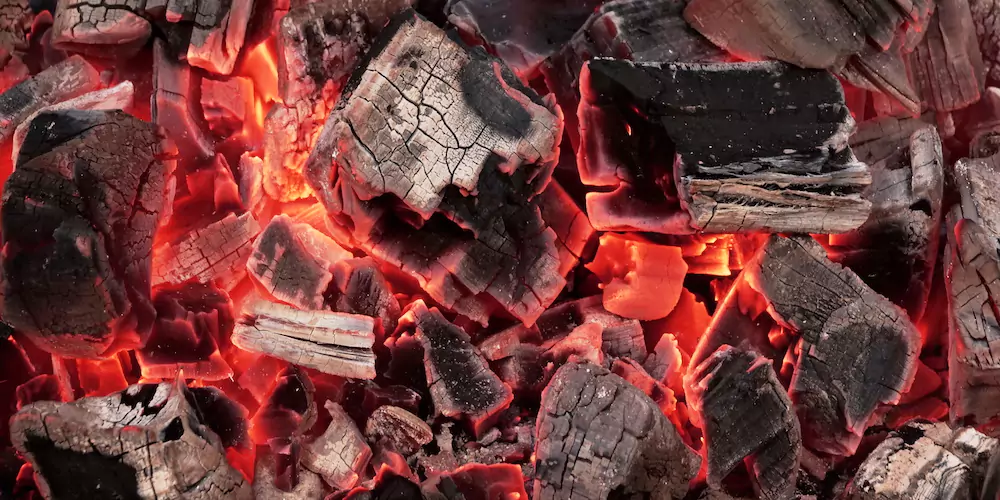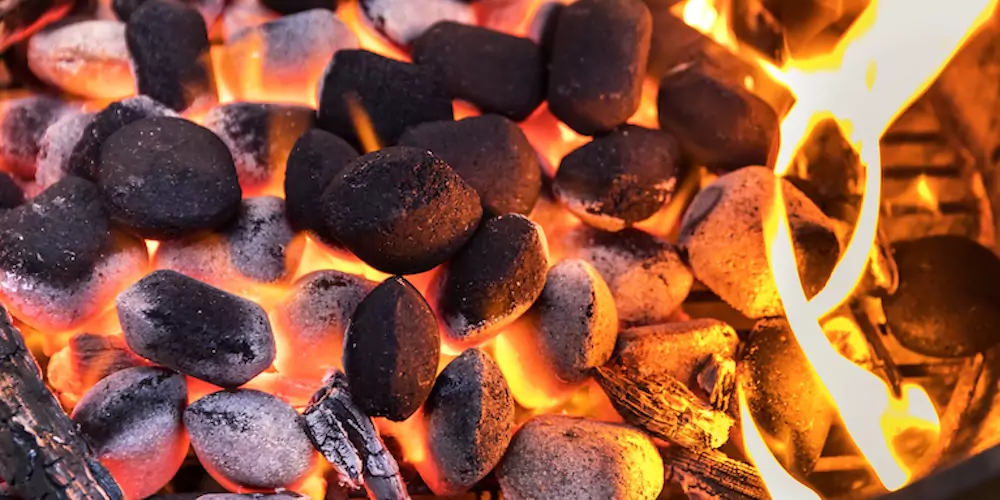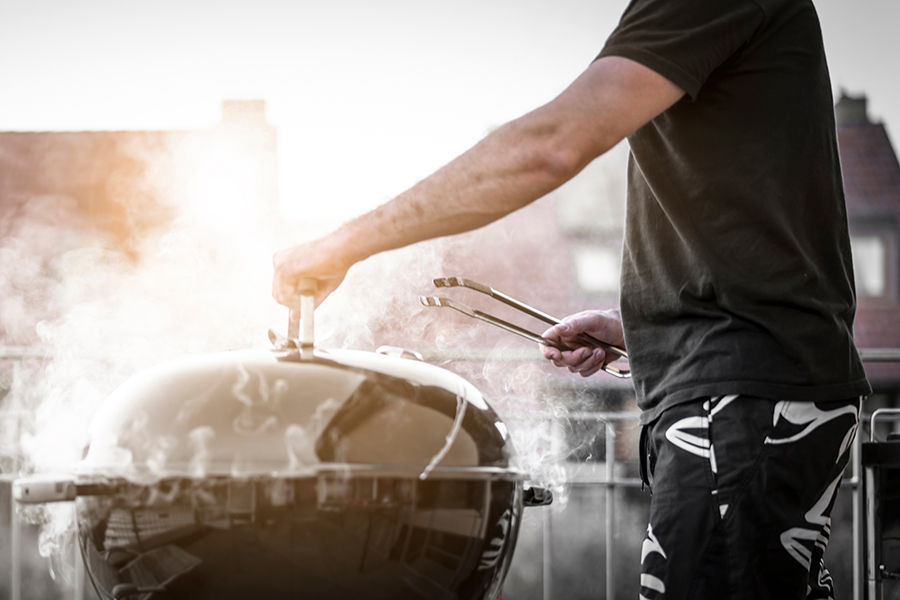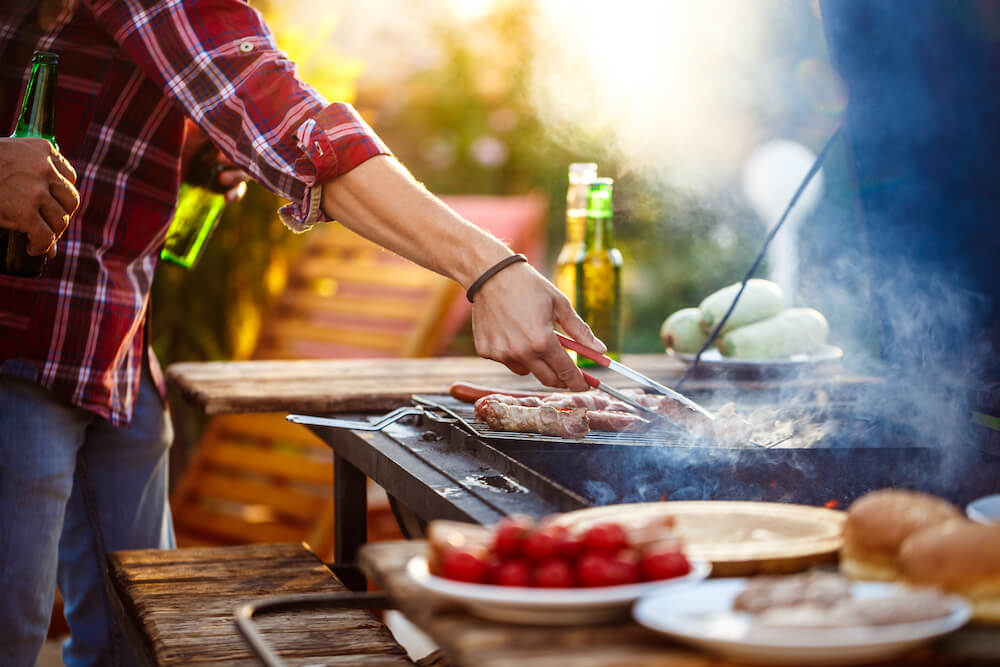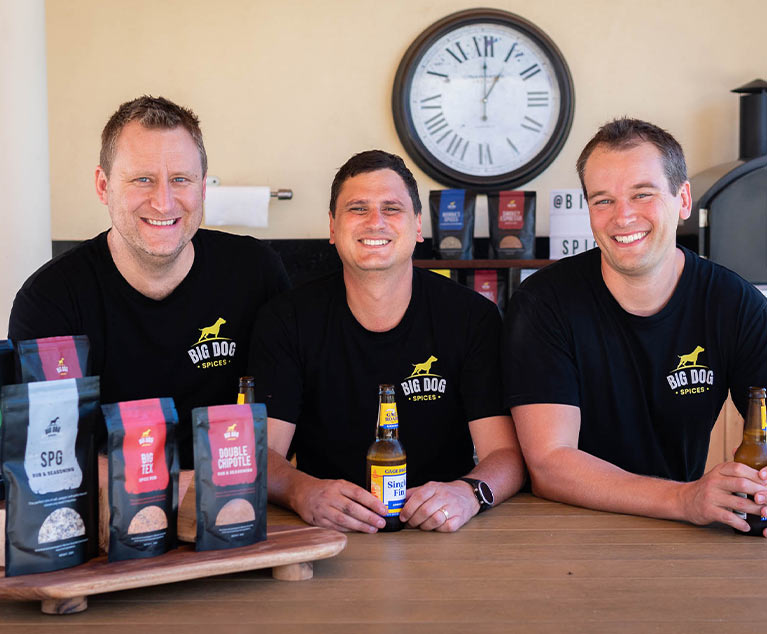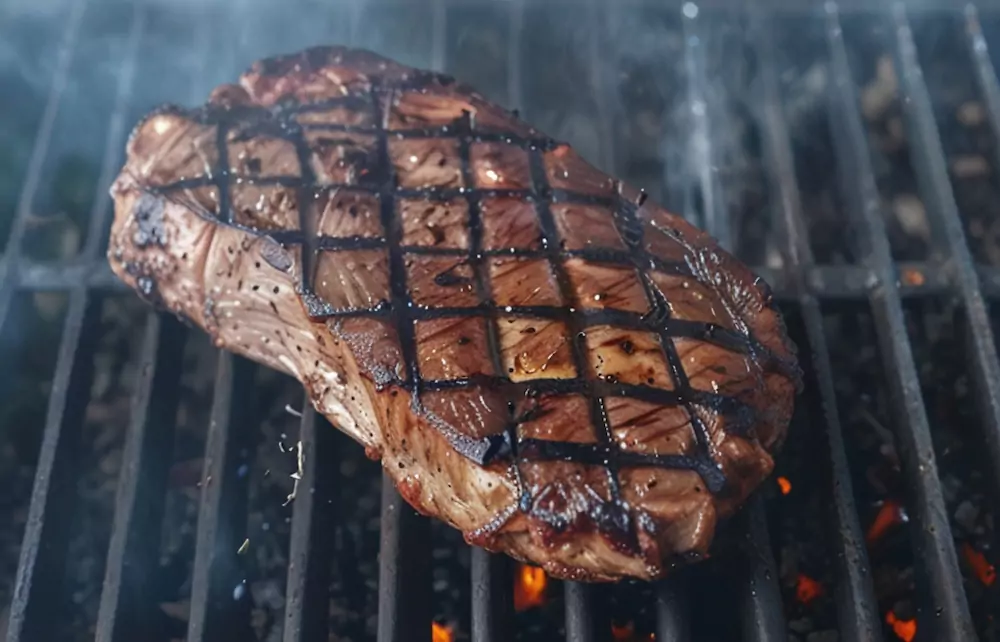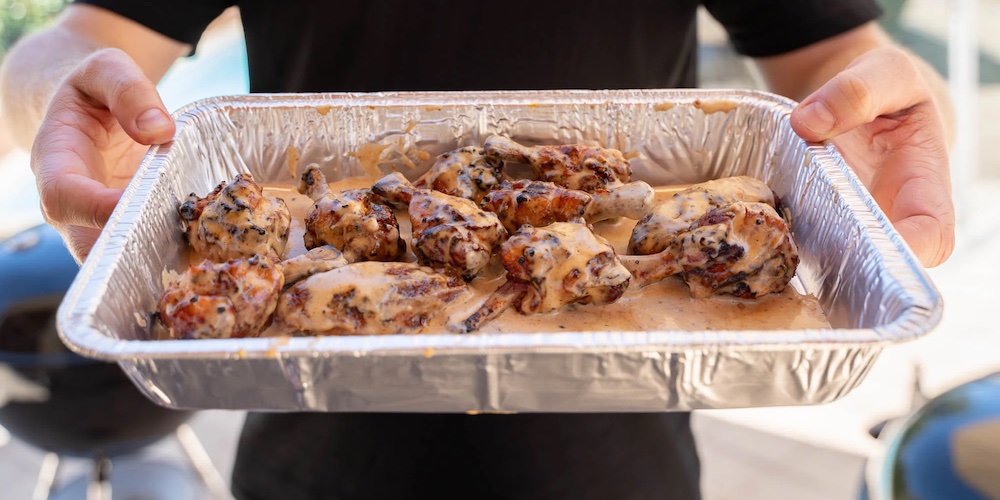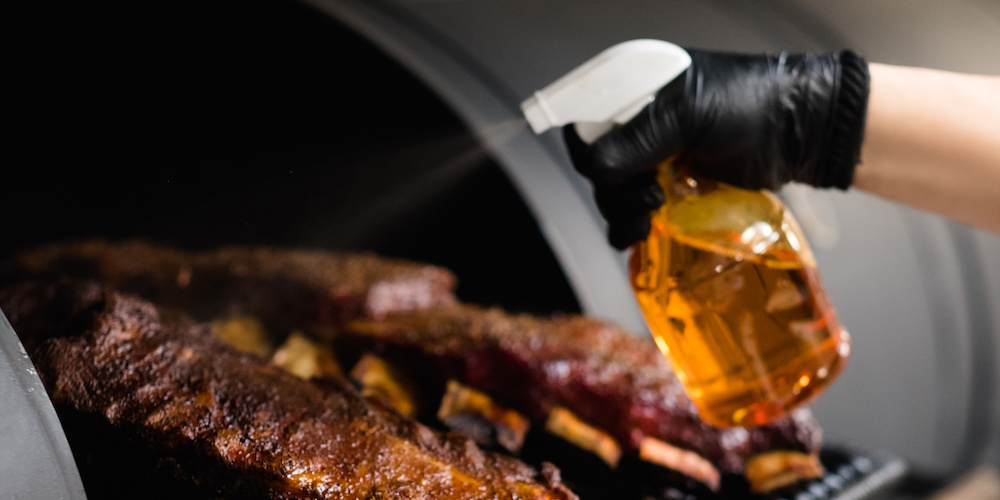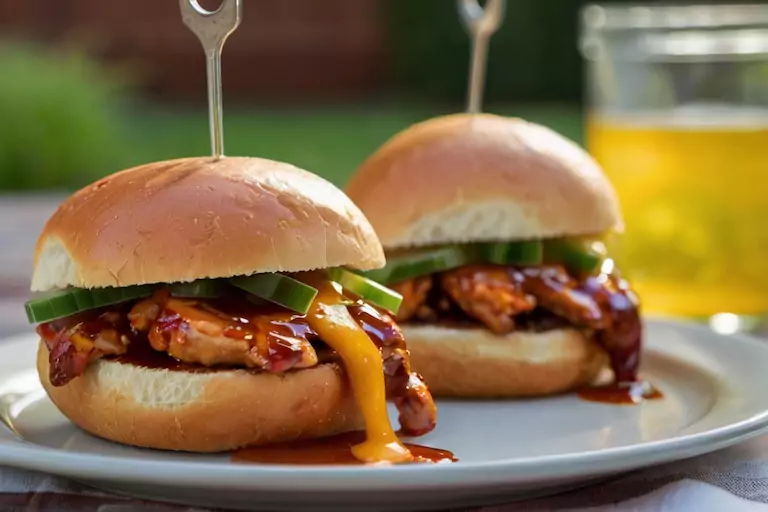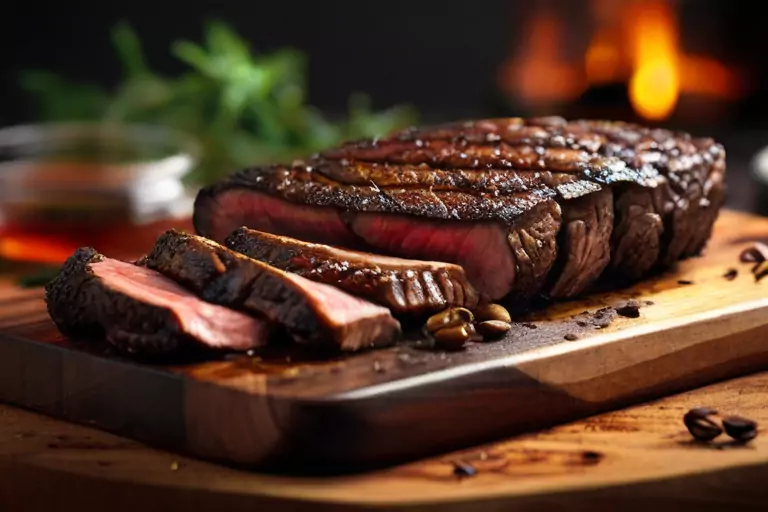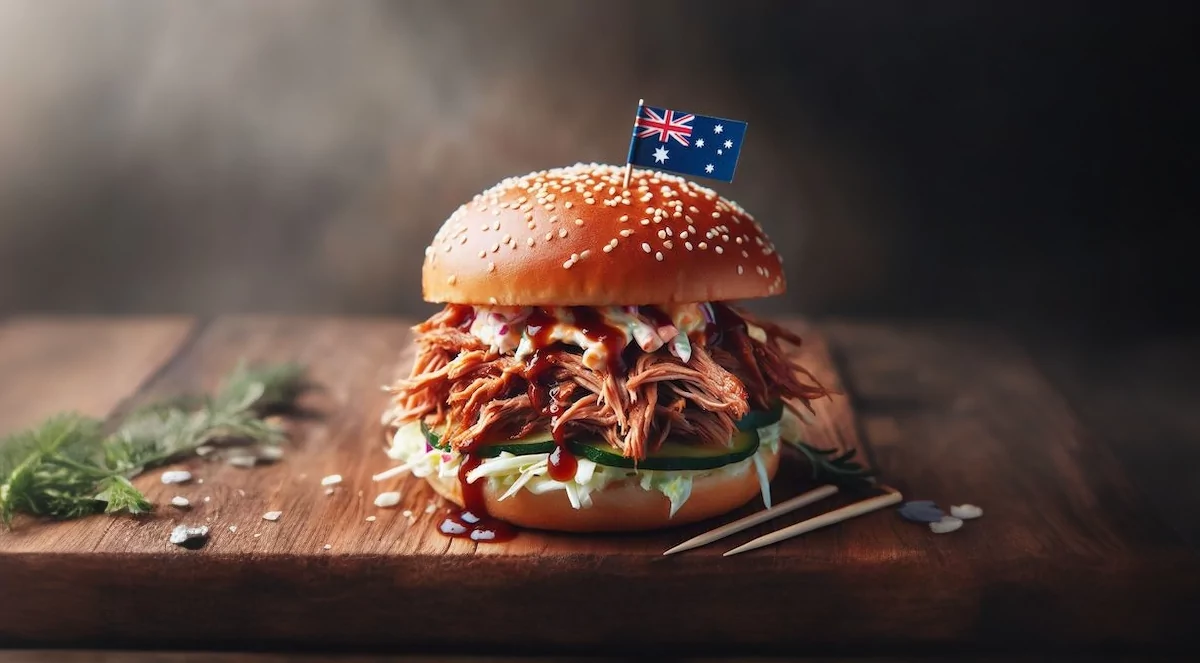I love cooking BBQ dishes that feed the whole family. Some of my favourites include burgers, pulled pork, chicken wings and ribeye. I like to experiment with different cuts of meat, varying levels of smokiness, and delicious home-made sauces.
Lump Charcoal vs Briquettes

Should you grill with lump charcoal or briquettes?
We hear this question often but the answer will depend on which Big Dog team member you ask. For me, the answer is simple: lump charcoal.
Luke would agree wholeheartedly with me, but Blake has a different opinion.
In this guide, we’ll tackle this hotly debated lump charcoal vs briquettes issue based on our own experiences over years of charcoal grilling so you can decide which is the best option for you.
Key Takeaways
- Lump charcoal pros and cons — Lump charcoal is an all-natural product that burns fast and clean but is more expensive and can contain unusual-shaped pieces that are hard to use
- Briquettes pros and cons — Briquettes are cheaper than lump charcoal but can produce a chemical odour and create a lot of ash
- Author opinions — Each of us here at Big Dog Spices has our own take on the charcoal vs briquettes debate (Luke and I are team lump charcoal while Blake prefers charcoal briquettes)
- How to choose between lump charcoal vs briquettes — Choose lump charcoal for easier temperature adjustment, less ash, and a natural product, and consider briquettes if you are smoking or need a long, even cook time
- Temperature control tips — Adjust air vents, use more or less charcoal, and create different heat zones to control the temperature when grilling
- Choosing high-quality lump charcoal or briquettes — Opt for Australian-owned reputable brands when buying lump charcoal or briquettes and look for briquettes without any added chemicals
- Environmental impact of briquettes vs charcoal — Briquettes can minimise waste by reusing wood byproducts but they may contain harmful additives. Lump charcoal is the more natural choice but its production requires larger pieces of hardwood.
Differences Between Lump Charcoal and Briquettes
What Is Lump Charcoal?
Lump charcoal is an all-natural product made from wood. It is created by slowly burning pieces of wood until they are free of any moisture, sap, or chemicals.
The result is a natural wood product that is considered one of the purist ways to grill. It burns hot, lights fast, has no additives or fillers, and produces very little ash.
Lump charcoal is also highly responsive to oxygen, meaning you can easily adjust the temperature by opening or closing the air vents on your grill.
What Are Briquettes?
Briquettes are produced from wood byproducts, such as leftover wood chips or sawdust. These wood byproducts are burned down using the same process as lump charcoal.
However, additives, binding agents, and chemicals are often added to briquettes to help make them easier to light. These additives can also help create a more even, consistent burn.
While these additives do add some advantages, they can create a chemical odour and contribute to a higher production of ash particles during the cooking process.
Key Differences Between Lump Charcoal vs. Briquettes
- Briquettes burn longer but do not burn as hot as lump charcoal
- Lump charcoal is a natural product whereas briquettes can contain additives, by-products, and chemicals to help make them easier to light
- Lump charcoal produces less ash and burns cleaner than briquettes
- Briquettes are cheaper than lump charcoal
- Lump charcoal is easier to light than briquettes
- Briquettes maintain a consistent temperature for longer but it is harder to adjust the temperature if needed
- Lump charcoal is highly sensitive to oxygen, making it easier to adjust the temperature compared to briquettes
Lump Charcoal Pros and Cons
| Pros | Cons |
|---|---|
|
|
Briquettes Pros and Cons
| Pros | Cons |
|---|---|
|
|
Opinions from Our Experts
Here, the Big Dog authors (Brad, Luke, and Blake) have picked a side on the lump charcoal vs briquettes debate and provided their opinions based on our personal experience.
Brad – Lump Charcoal
There’s no secret to my choice in the charcoal vs. briquette debate. I’m fairly new to the grilling world, so I just want easy! For me, that’s lump charcoal.
At first, I thought I’d find briquettes would be easier since they are known for maintaining a consistent temperature over long periods. But I learned a lot about temperature control from Luke, who taught me that airflow is key.
With its sensitivity to oxygen, I like knowing that I can make lump charcoal respond rapidly by opening or closing air vents. Charcoal is perfect for me because I need all the help I can get in the temperature control department!
Although briquettes are good for maintaining a consistent temperature, I find that if I accidentally load too much or too little charcoal briquettes at the start, it’s harder to adjust the temp.
Lump charcoal burns faster and hotter, so I do need to watch it closely. But I know I can make easy adjustments to the temperature as long as I keep an eye on things. Also, you just can’t beat the taste that lump charcoal offers.
Blake – Briquettes
Give me briquettes any day for grilling! I enjoy the long burn time and stable temperature that briquettes offer, especially for smoking.
For smoking, I find that briquettes are the superior choice. That consistent, long-lasting, even temperature is perfect for achieving mouthwatering results. I like to switch things up, so I’ll occasionally use charcoal too. But most of the time, you’ll find me grilling with briquettes.
I know a big complaint with briquettes is the possible additives, so I always seek out brands like Redheads (more on this below) without added chemicals or fillers. I also burn the briquettes until they have a slight covering of white ash. I find this helps cut down on any unwanted smells.
Luke – Lump Charcoal
Lump charcoal is my go-to choice when grilling. I like knowing exactly what’s in it. I’ll gladly pay more to know I’m using an all-natural product. I don’t like the guessing game that comes with using briquettes.
To me, lump charcoal is the clear winner and a tried and true grilling classic.
Like Brad, I also like how quickly I can adjust the temperature using the air vents. Charcoal responds rapidly to changes in airflow, so I can quickly increase or decrease the temperature if needed.
I also like the minimal ash created. I use briquettes if I’m smoking a brisket or pork shoulder. The end result is delicious but I do find briquettes to be messy to work with in terms of the ash.
How to Choose the Best Type of Charcoal for Your Needs
Here are some tips to help you decide between lump charcoal vs briquettes.
Chose lump charcoal if:
- You consider yourself a grilling purist who prioritises natural products
- You want less ash and mess
- You want the ability to precisely control your cooking temperature
- You need to cook something hot and fast
- You want the best possible flavour
Choose briquettes if:
- You are smoking meats
- You want a ‘set it and forget it’ approach to the grilling temperature
- Your girl does not have adjustable air vents
You May Also Like: The Ultimate Guide to Charcoal Grilling
How to Control the Temperature of Lump Charcoal and Briquettes
Here are the 8 tips I’ve learned from Luke to control the temperature when grilling.
1. Charcoal Amount
I follow this simple rule: Use more lump charcoal for high heat and less for low heat.
On the rare occasion I use briquettes, I only start with enough briquettes to reach the desired temperature, as they are slower to adjust.
2. Airflow Management
Grill vents are one of the easiest ways to control the temperature, especially for quicker adjustments. Open vents allow more oxygen in, increasing the heat. Partially closed vents reduce heat.
With this method, lump charcoal will respond far quicker than briquettes.
3. Charcoal Arrangement
When I want to cook at high temperatures, I place the charcoal directly under the food. If I’m trying to achieve indirect heat and lower temperatures, I arrange the charcoal off to one side.
4. Monitoring and Adjusting
Throughout the cooking process, I recommend regularly checking the grill’s temperature with a thermometer – especially if you are using lump charcoal. Adjust the charcoal amount and airflow as needed.
5. Chimney Starter
I opt for a chimney star for even lighting, especially if I’m using briquettes.
6. Heat Zones
Create different heat zones in larger grills by varying charcoal height and spread. This is easier to achieve if you are using briquettes as their uniform sizes make them easier to stack.
7. Adding Charcoal
Throughout the grilling process, add more charcoal as needed, particularly for briquettes.
8. Water Pans (For Smoking)
In smokers, use water pans to stabilise temperature and add moisture.
Where to Buy Good Value Lump Charcoal and Briquettes
There are a lot of different options to compare when buying lump charcoal or briquettes, so I’m sharing our team favourites here at Big Dog Spices that you can conveniently buy from your local Woolworths:
- For lump charcoal, I choose Samba Lump Charcoal BBQ Fuel. We all agree that the Samba lump charcoal is premium quality with a rich, hardwood aroma. It’s also easy to light and burns hotter and longer than other brands we’ve tried.
- For briquettes, I highly recommend Redheads Classic BBQ Briquettes. If I do grill with briquettes, these are my #1 choice! I’ve noticed these burn a lot cleaner than other briquette brands and have an excellent burn time. We all like how these briquettes are free of binders or added chemicals.
I also recommend Heat Beads Original BBQ Briquettes. Luke, Blake, and I all like how long these briquettes burn and find that they do not have the chemical odour often associated with other briquettes.
You may also like: Charcoal BBQ Grill Buying Guide
Charcoal vs Briquettes: Illustrative Example
I put together this illustrative scenario to give you an example of how cooking with briquettes vs charcoal varies.
Preparation for the BBQ Event
Alex is hosting a weekend barbecue for friends and family. The menu includes a variety of meats: quick-sear steaks, slow-cooked brisket, and some chicken.
Choosing the Charcoal
For the steaks, Alex prefers lump charcoal. He chooses a high-quality Australian brand, such as Samba, known for its ability to reach high temperatures quickly, essential for achieving a perfect sear on the steaks.
For the brisket, which requires long, slow cooking, Alex opts for briquettes. He selects a reliable brand like Redheads, available from his local Woolworths. Briquettes are ideal for maintaining a consistent temperature over several hours, crucial for slow-cooking the brisket to tender perfection.
Lighting the Charcoal
Alex uses a Flaming Coals Starter Wand to light the lump charcoal, appreciating its ease of use and quick lighting capabilities. He waits for the charcoal to be covered in white ash, indicating it’s ready for cooking.
For the briquettes, he uses a charcoal starter chimney, placing a fire lighter underneath. Once lit, he adds more briquettes to reach the desired temperature, considering their longer ignition time.
Cooking the BBQ
For the steaks, Alex piles the hot lump charcoal in the high-heat zone of the BBQ, perfect for searing. He briefly cooks the steaks over this intense heat to achieve a crispy exterior.
For the brisket, he spreads the briquettes out evenly for a moderate, steady heat. The brisket is cooked slowly over several hours, allowing it to become tender and flavourful.
Alex uses the vents on his BBQ to control airflow, adjusting the temperature as needed, especially important when managing the different needs of lump charcoal and briquettes.
Post-BBQ Cleanup
After the BBQ, Alex notices the difference in ash production. The lump charcoal leaves behind significantly less ash compared to the briquettes, making cleanup easier and quicker for the steak cooking area.
In contrast, the area where he used briquettes requires more thorough cleaning due to the larger volume of ash.
What Is the Environmental Impact of Charcoal Briquettes?
Charcoal briquettes are created from wood byproducts, including wood scraps, wood chips, agricultural waste, and sawdust.
Although these materials are good in the sense that they utilise leftovers, transporting these leftovers has an environmental impact.
To form the briquettes, binding agents are often added to create uniformly shaped pieces. Chemicals and additives are also often added to help the briquettes light more easily. When burned, these additives and fillers can release harmful chemicals into the environment.
Alternatively, lump charcoal is an all-natural wood product that is free of additives, fillers, binders, and chemicals. However, its production process may have a higher environmental impact.
Whether you choose lump charcoal vs briquettes, here are tips on sustainable grilling practices:
- When possible, I like to reuse charcoal from a previous grilling session
- Opt for a chimney star rather than lighter fluid (which often contains harmful chemicals)
- Take care when disposing of used briquettes and ash (consider adding wood ash from lump charcoal to your garden as a sustainable disposal solution)
FAQs
Which is More Cost-Effective: Lump Charcoal or Briquettes?
Lump charcoal is generally more expensive but burns hotter and faster, ideal for quick cooking. Briquettes are cheaper and burn longer, making them more economical for slow cooking. Choose based on your cooking style and duration.
How Should I Store Lump Charcoal and Briquettes?
Store both lump charcoal and briquettes in a cool, dry place, away from moisture. Use an airtight container or metal bin with a lid. Keep them off the ground and in a well-ventilated, fire-safe area.
Can I Use Both Lump Charcoal and Briquettes Together?
Yes, combining them can offer high heat from lump charcoal and consistent, longer burning from briquettes. Start with lump charcoal for quick heating and add briquettes later for sustained cooking. Monitor ventilation and temperature control closely.
Summary
The briquettes vs charcoal debate will never end, but both options can produce delicious results, especially when paired with a good spice rub.
Ultimately, the charcoal vs briquettes debate comes down to personal preference.
Here at Big Dog Spices, we know that lump charcoal and briquettes both have their time and place in the grilling world.
Do you have a preference between briquettes vs charcoal? We’d love to hear your thoughts!

